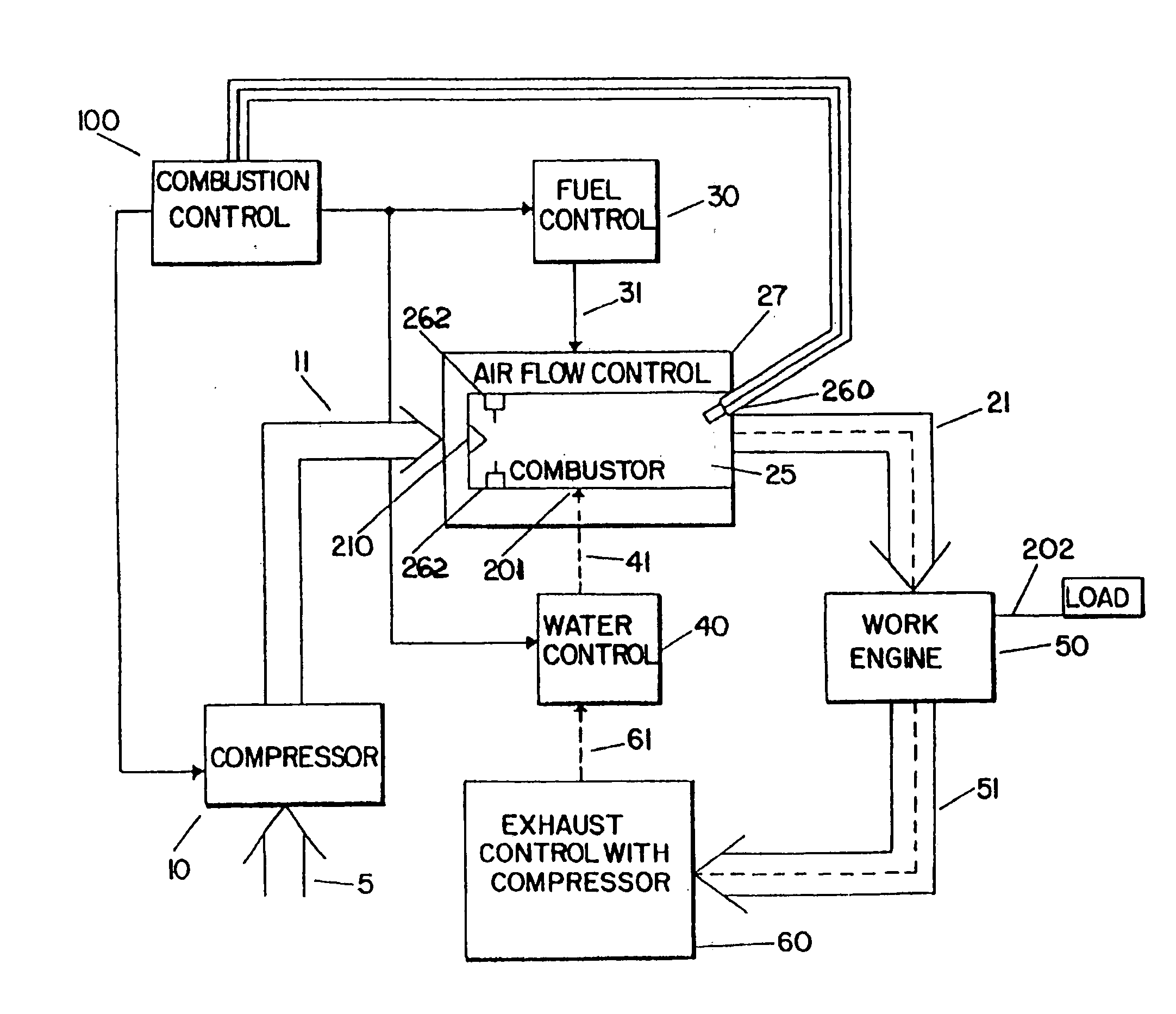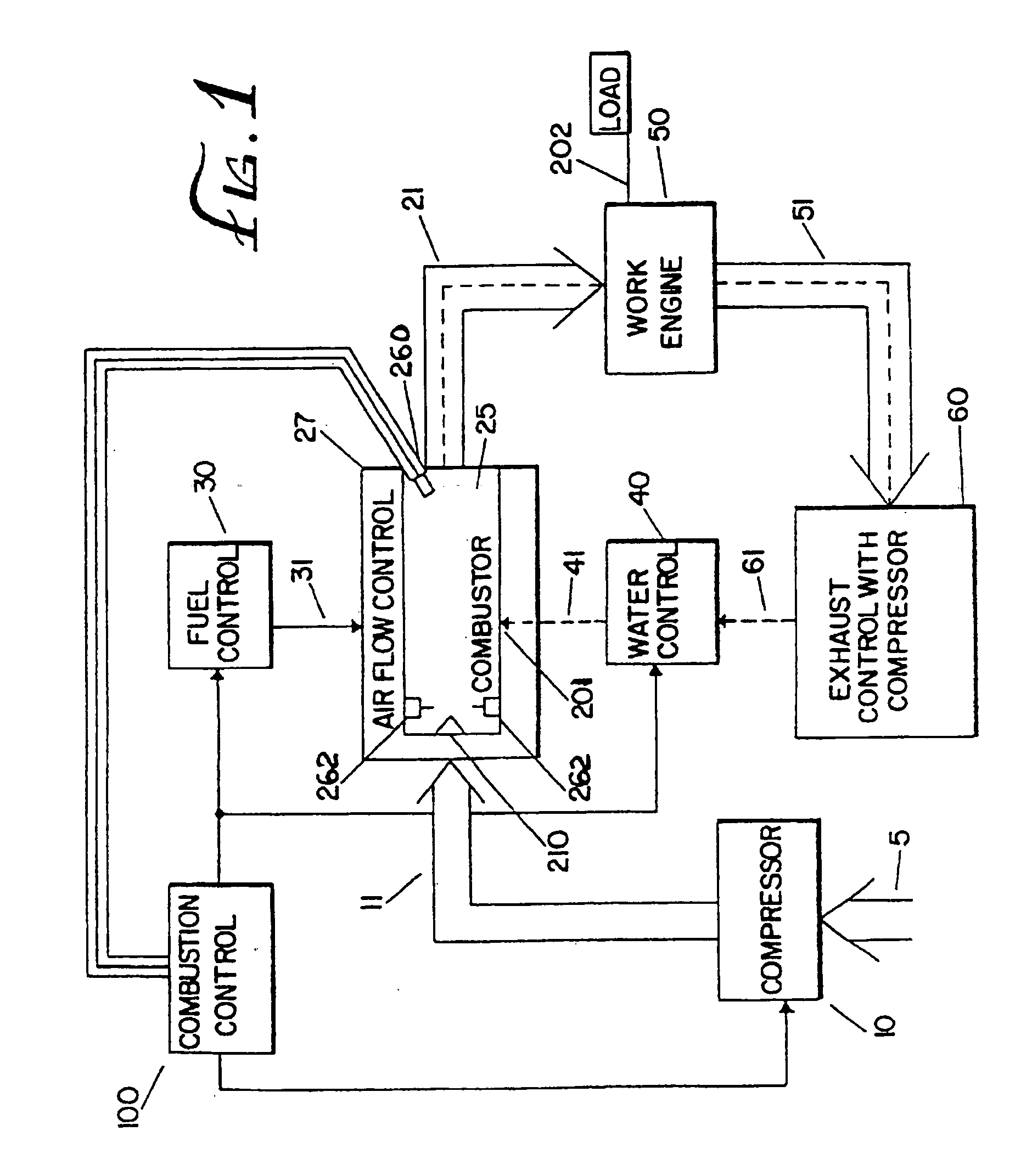High efficiency low pollution hybrid brayton cycle combustor
a combustor and high efficiency technology, applied in the direction of machines/engines, efficient propulsion technologies, light and heating apparatus, etc., can solve the problems of limited general adoption of such engines, inability of such engines to meet sudden demand and/or maintain a constant working temperature or pressure, and inability to control such engines inefficiently, so as to achieve clean, efficient, pollution-free power
- Summary
- Abstract
- Description
- Claims
- Application Information
AI Technical Summary
Benefits of technology
Problems solved by technology
Method used
Image
Examples
Embodiment Construction
[0056] A. Basic Configuration of the Present System
[0057] Referring now to FIG. 1, there is shown schematically a gas turbine engine embodying the teachings of the present invention. Ambient air 5 is compressed by compressor 10 to a desired pressure resulting in compressed air 11. In a preferred embodiment, compressor 10 is a typical well-known two or three stage compressor, and the ambient air 5 is compressed to a pressure greater than about four (4) atmospheres, and preferably 10 to 30 atmospheres. The temperature of the compressed air depends on the compression ratio. At a compression ratio of 30:1 the compressed air temperature is approximately 1424° R (964° F.).
[0058] The flow of the compressed air 11 is controlled by an air flow controller 27 to a combustor 25. Combustors are well-known in the art. However, in the present invention, the compressed air 11 is supplied in a staged, circumferential manner by air flow control 27 to the combustor 200 shown in FIG. 2 and more fully...
PUM
 Login to View More
Login to View More Abstract
Description
Claims
Application Information
 Login to View More
Login to View More - R&D
- Intellectual Property
- Life Sciences
- Materials
- Tech Scout
- Unparalleled Data Quality
- Higher Quality Content
- 60% Fewer Hallucinations
Browse by: Latest US Patents, China's latest patents, Technical Efficacy Thesaurus, Application Domain, Technology Topic, Popular Technical Reports.
© 2025 PatSnap. All rights reserved.Legal|Privacy policy|Modern Slavery Act Transparency Statement|Sitemap|About US| Contact US: help@patsnap.com



